Sudden wind induced gable collapses
Over the past thirty years there has been a steady increase in sudden and catastrophic wall collapses. Virtually all these events have taken place during windy weather, usually during or shortly after a gale-force warning. In addition, virtually all of these have involved gable walls which have fallen down without warning. As a result, we define the phenomenon as “Sudden wind induced gable collapse”
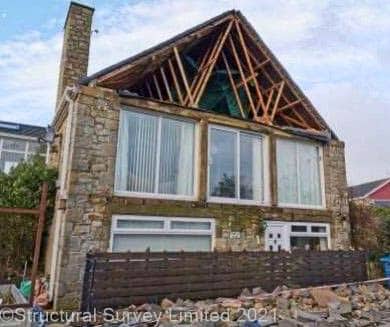
What is a gable?
As seen in these images, gables are upper sections of wall, which have a triangular section at the top, sometimes finished by the roof slates or a row of coping stones along the verge of the roof. The vertical load at the top of a gable can be quite low, meaning it has light weight, in relation to its surface area. This means that it needs additional support from the main house via strap connection to internal walls, the roof,and ceilings.
These facts are well known, and it is why provision of gable restraint is required by modern building regulations. Therefore, straps are always included in new homes. These straps connect the gables to the internal superstructure.

Why are so many gable walls bulging out or collapsing now?
Wind induced gable failures used to be rare. However, they are becoming more common right across the country, and particularly in the north of the UK. The reasons for this increase are:
- Traditional houses were not built with effective lateral restraint, so in effect the older they get, the higher the risk of wear and tear reaching a critical stage. This is caused by gradual ‘creep’ of unrestrained gables
- Many older gables are also cavity walls. The metal wall ties in them corrode, causing stress in the masonry, as well as cracking. Cavity wall tie failure can transmit loads to the lightly-weighted apex area of a gable, pulling the inner wall outward with the ‘unzipping’ external leaf.
- Climate change is implicated too, due to the increased number and ferocity of storms and gales. The higher wind speed increases turbulence near walls, known as ‘rotor’ and vortex formation. This happens at gable verges and ridges, which in turn, can initiate failure of walls which contain corroded wall ties and/or missing restraint straps.

The following image is a close up of the above gable.
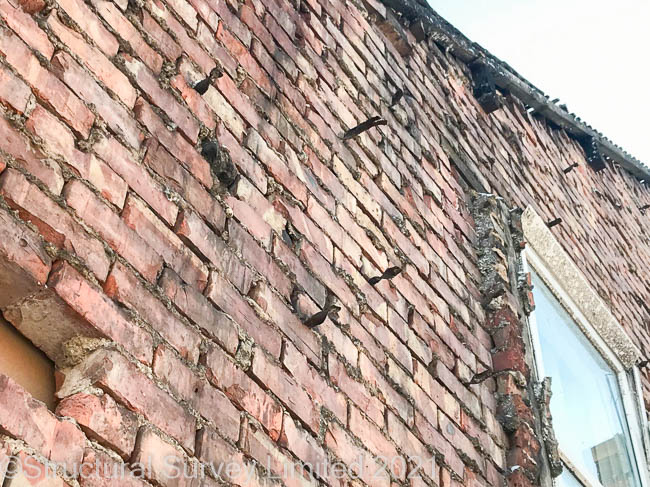
How can a homeowner tell if their home is at risk of sudden wind induced gable collapse?
A simple walk around the outside of a house will allow a quick check to see if there are any gable walls. If there are, an inspection is quite straightforward. In most cases, it involves access into the roof void next to the gable wall. This is because only gables which are already leaning out a long way will look defective when viewed from ground level. In the early and mid-stages of movement, close inspection of the inside face from within the loft, is essential.

This is why a competent surveyor or structural engineer is required. The inspection needs to be done carefully and involves a thorough check for any existing lateral restraint straps and their suitability, number, and condition. Early and mid-stage lateral movement can be identified using a spirit level to check the gable’s vertical tolerance. Other signs, such as characteristic features of the masonry and roof/ceiling structure and the extent of any wall tie corrosion, will also inform experienced surveyors like ours.
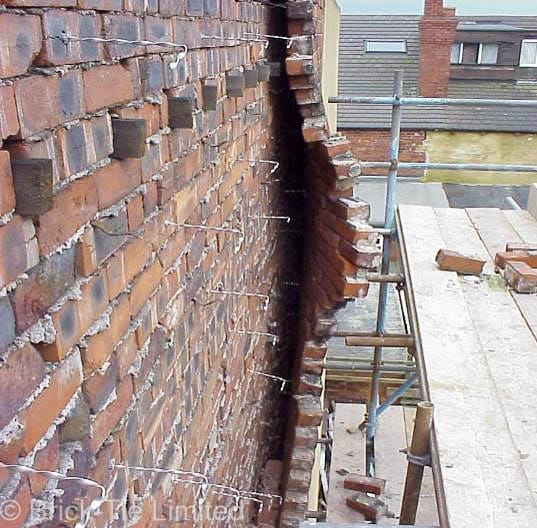
The condition of the wall ties in a cavity involves drilling some holes and the use of a boroscope to check for corrosion. Brick-Tie carry out wall ties surveys across Yorkshire. As part of this inspection we usually include a check on the gable lateral restraint.
If a gable is at real risk of wind induced movement or collapse, what can be done?
Despite the worrisome nature of the defect repair and protection is usually quite straightforward, and economically achieved. A wide variety of lateral restraint systems can be used. These include a mix of traditional strapping and modern retro-fit lateral restraints. Brick-Tie are the experts in wall tie corrosion so any wall tie defects can be repaired by us too
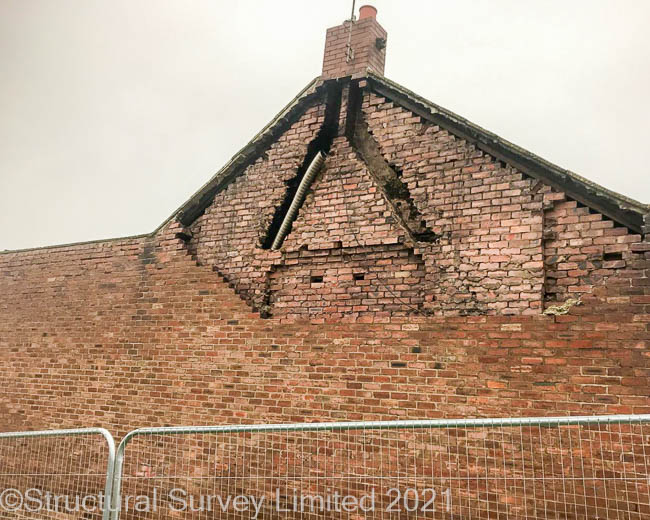
The cost of wall tie corrosion and lack of lateral restraint
The cost associated with these methods depends on many factors, including the size and height of the gable, safe access, wall thickness and make-up, any associated wall tie corrosion, as well as the degree of existing movement (if any).
Brick-Tie’s experienced surveyors know all the restraint systems. If there are gables at risk and work is needed, we will specify the right fixings for your property. It is about ensuring an adequate and guaranteed lateral restraint for your gable, without costly over-specification. There must be no cutting corners or shoddy, half-hearted solutions.
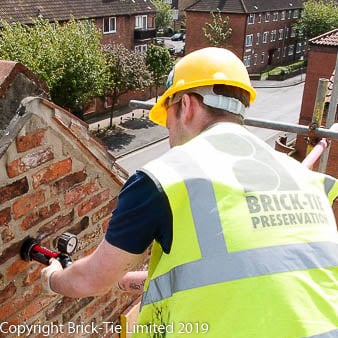
Value for money and quality tie solutions.
Brick-Tie specifies lateral restraint work or wall tie replacement in great detail. Our clients can see our methodology, outlining the how and the why of the proposed repair. We never provide an ‘estimate’, which could change. Only fixed price quotations are issued, which you can rely on. As a business with over 35 years behind us, we understand that value for money is crucial. Once work is complete, clients can relax, because the guarantees we issue will never need to be called upon. Our guarantees are insured and dependable, but our focus is always on getting the solution right and delivering it dependably, every time. Meet the team who serve you here.
Duty of care
Our surveyors carry out cavity wall tie corrosion surveys daily. This is an ideal time to inspect properties for ‘at risk’ gables. As part of our duty of care to our clients and following the increase in sudden gable collapses in 2021, we automatically check all ‘at risk’ gables for stability.
For further advice or information please feel free to call us and speak to one of our friendly and knowledgeable team.
Contact us here for action across Yorkshire.
Here is a link to a video of a sudden wind induced gable collapse.






